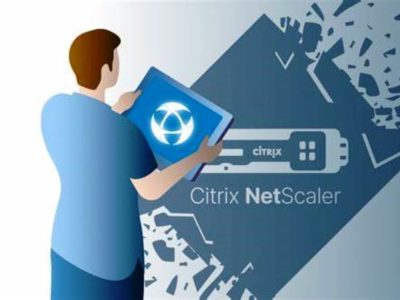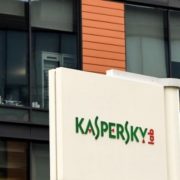In his 1962 book Profiles of the Future, the eminent scientist and author Arthur C. Clarke wrote that “any sufficiently advanced technology is indistinguishable from magic.”
That maxim is as true today as it was over six decades ago when it was laid down. In particular, networking technology has evolved to the point where it’s seamless and ubiquitous, offered over the air regardless of where we are or what we are doing.
RELATED Can Hybrid Learning Reshape The Educational Landscape?
Campuses are one of the beneficiaries of this magic technology. Huawei’s CloudCampus offering has been implemented at campuses the world over. This could be a university campus or a corporate environment. CloudCampus offers significant benefits over rivals such as Cisco Systems’ Digital Network Architecture (DNA), according to a recent Tolly Group report that had several significant findings of particular relevance to the higher education sector.
Tolly Report: Huawei vs. Cisco
The Tolly Group report breaks its insights down into five key points. The first finding is that Huawei’s CloudCampus has simpler and more effective deployment modes than Cisco DNA in terms of network architecture. It also provides automated network management across the entire lifecycle, including planning, deployment, maintenance, and optimization.
This simplicity means that network operations save time, as well as resources and investments.
Tolly Group also noted that the Huawei platform offers intelligent operations and management (O&M) and provides more AI-enabled functions than the rival product from Cisco, ensuring optimal service and user experience. Huawei’s CloudCampus also outperforms Cisco’s DNA in terms of network security and network openness; CloudCampus offers more open functions that facilitate interconnection with third-party applications, systems, protocols, and endpoints.
Making it All Work on Campus
CloudCampus outperforms rivals in terms of network deployment. Network engineers often find that video conferencing and online training service provisioning occurs quickly, but the real bottleneck happens at the network deployment stage. This stage can often take weeks or months. CloudCampus allows fast provisioning, enabling network rollouts in double-quick time.
Another area where CloudCampus makes a more compelling offering than its competitors is in the prioritization of video. Often existing networks don’t allow for preferential video provisioning for VIPs and other high-priority groups. As a result, the network slows down, and engineers have a hard time identifying where the chokepoints are and then working around them.
Finally, many campuses find that while employees work on a mobile basis, other staff such as outsourcing, research and development, and marketing work together. They are often granted access to parts of the network they should not be able to get into. This means security isn’t guaranteed, hampering the efforts of engineering staff to ensure quality of service.
CloudCampus responds to these challenges in several key ways. It incorporates all-cloud management capabilities allowing automation of network deployment, policy control, terminal access and application policy.
This is made possible Huawei’s next generation autonomous driving network management and control system for campus networks, known as iMaster NCE-Campus.
CloudCampus also offers intelligent network O&M, which lets network engineers and administrators quickly locate faults and to improve the reliability of user and application experiences. Huawei’s intelligent network O&M uses AIOps technology, deploying telemetry to detect network, user and application status on campus networks in real time.
Using telemetry and AIOps leverages artificial intelligence (AI) and machine learning (ML) to automatically and intelligently analyze and evaluate experience quality. The upshot? Network administrators can determine a per-user experience using AI correlation analysis – this means problems are accurately identified and the root causes are analyzed.
CloudCampus in the Real World
Southeast University, located in Nanjing, China, is a large tertiary-level institution founded in 1902. It found that as the level of digitalization increased, its legacy network was not up to scratch.
The school realized it needed a future-oriented network to support the development of “first-class” disciplines and offer lightning-fast connections to every corner of the campus and its branches.
It also concluded that operations and management (O&M) needed automation to resolve the issues caused by multiple networks distributed across campuses. These issues included passive service isolation, as well as unsystematic, dispersed data.
To solve these issues and ensure automated O&M, Southeast University settled on Huawei CloudCampus. It deployed Wi-Fi 6 wall plate access points into each dormitory. These access points have industry-leading smart antennas which lets signals move with users, ensuring full Wi-Fi coverage with zero blind spots.
The project was massive, involving more than 9700 dormitories across 122 dormitory buildings. Yet despite the scale, the entire project was completed in 39 days.
The access points outperformed the old network by a significant margin. The old Wi-Fi 5 APs topped out at 200 Mbit/s per terminal. The new Wi-Fi 6 reached 400 Mbit/s, making it ideal for bandwidth-hungry services such as large file downloads, live-streamed courses, Massive Open Online Courses (MOOCs), and video conferencing.
CloudCampus’ superior performance compared to rivals comes down to several key points, including its intelligent upgrades in O&M, connectivity and user experience. The solution uses the AI-based iMaster NCE-Campus software, which is Huawei’s next-generation Autonomous Driving Network (ADN) management and control system, as well as intelligent network analysis and troubleshooting via iMaster NCE-CampusInsight software.
Cloud Campus’ O&M capabilities can also be seen its use by Finland-based Viria Security Oy, generally known as Viria. It offers electronic security systems, as well as cybersecurity and data network solutions to a variety of businesses in Finland.
CloudCampus helped Viria reduce both OPEX and O&M costs using both iMaster NCE Campus and iMaster NCE CampusInsight. According to Viria, CloudCampus helps O&M staff discover 85 percent of network issues immediately.
The proof of all this is in the end-user response, with one Southeast student observing that “the upgraded Wi-Fi network is awesome, with incredible signal all over our dormitories. The connection is stable, never disconnecting, even during peak hours. Its high bandwidth also means that live-streamed classes are smoother than ever and downloading files from the network is crazy fast.”
Arthur C. Clarke might not have foreseen Wi-Fi, but as the experience of students at Southeast and many other campuses across the globe demonstrates, it’s little short of magic.
Huawei will host Huawei Connect 2021 online from September 23 to October 31, complete with live broadcasts, digital exhibitions, and the opportunity to connect with industry experts. The theme of this year’s event is Dive into Digital. We’re going to dive deep into the practical application of technologies like cloud, AI, and 5G in all industries, and how they can make organizations of all shapes and sizes more efficient, more versatile, and ultimately more resilient as we move towards economic recovery.

































